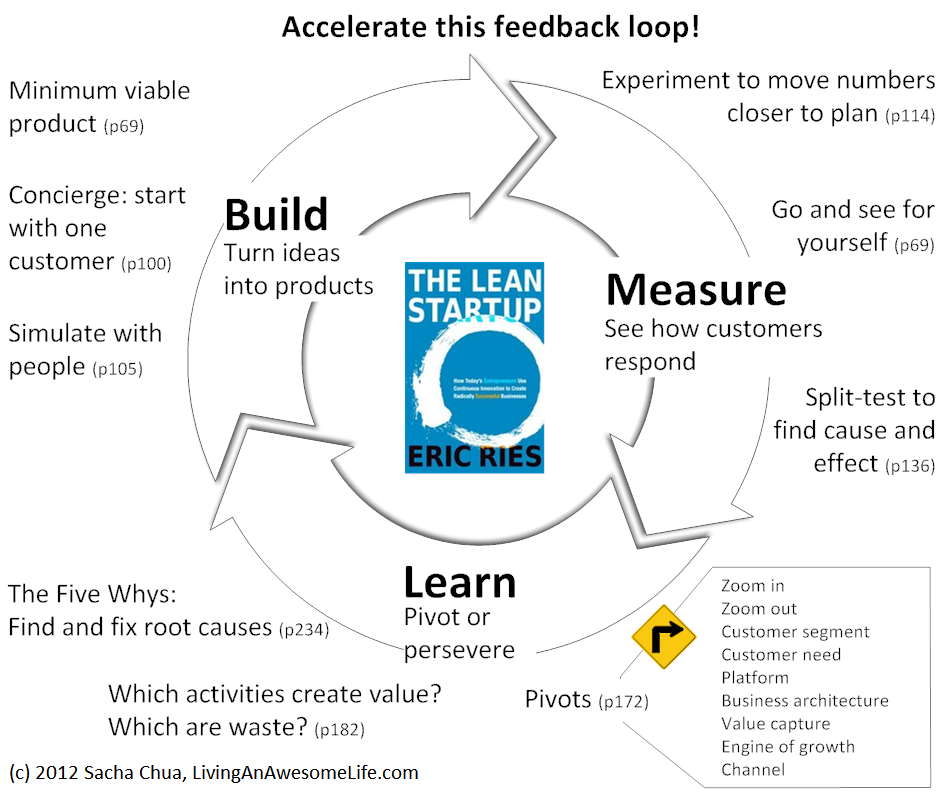Visual book notes: The Lean Startup by Eric Ries
Posted: - Modified: | book, reading, visual, visual-book-notesPlease feel free to share this! (Creative Commons Attribution Licence)
Eric Ries’ The Lean Startup book is popular, and for good reason. Ries shows people how to make the most of the Build-Measure-Learn loop whether they’re starting a snazzy technology company or creating an intrapreneurial venture within a corporation. Many people get hung up on the idea of launching with a big bang, but if you take this Lean Startup approach, you might learn a lot more by talking to actual customers and by experimenting with with your business. I particularly like the reminder to simulate technology with people first, as it can be tempting to procrastinate getting market feedback because your technology isn’t built yet. Do it by hand. Do it for one person at a time, if needed. There’s plenty to learn, and you don’t have to let development cycles slow you down.
Ries also emphasizes the importance of pivoting, which is what you do when you realize that your original business idea was off the mark. Pivoting is about listening to customers and growing into the business they want you to be, while taking advantage of the things you’ve learned in the past and the assets you’ve already built. Sometimes you should persevere instead of getting distracted by one or two stray opinions, but other times, you should listen to what people (and your experiments!) tell you.
Another key point in this book is that of accelerating this feedback loop. Get faster at building, measuring, and learning from the results. Orient your organization towards it. Practise relentless improvement until your build-measure-learn loop is fast and smooth. Then your company will be an incredible engine for learning!
Whom this book is great for: Starting a company? Read this book. You’ll get lots of tips from it, and you could save lots of time, money, and frustration along the way.
Interested in making things happen even within a large company? You might be able to use the build-measure-learn loop to make your day job even better, or to create scalable value outside your typical job responsibilities.
What I’m learning from this book: I’m using the concierge approach to help people with Quantified Awesome, because it’s fun building something that’s tailored to the way people work and what people want to measure. My goal is to get to the point where people are happy to pay $1-5 a month for tools to help them ask and answer questions about their life using data. I’m also going to work on using the build-measure-learn approach for entrepreneurship (a meta-experiment!), and using the minimum-viable-product approach to writing a book using LeanPub. Someday I might even use split-tests – or better yet, help businesses use them to set up experiments!
What do you think of this format? Do you want more detail? Less detail? More drawings? More hand-writing? More stick figures? What other books would you like me to visually summarize? I’m near one of the world’s biggest library systems, and I love learning from and sharing good books.


1 comment
Average Joey
2014-02-01T12:19:42ZHi Sacha, I'm loving all the lean startup visuals you have on here, This visual book note of Lean Startup book is particularly useful. Love the the little pivot pull out and the quick page references.